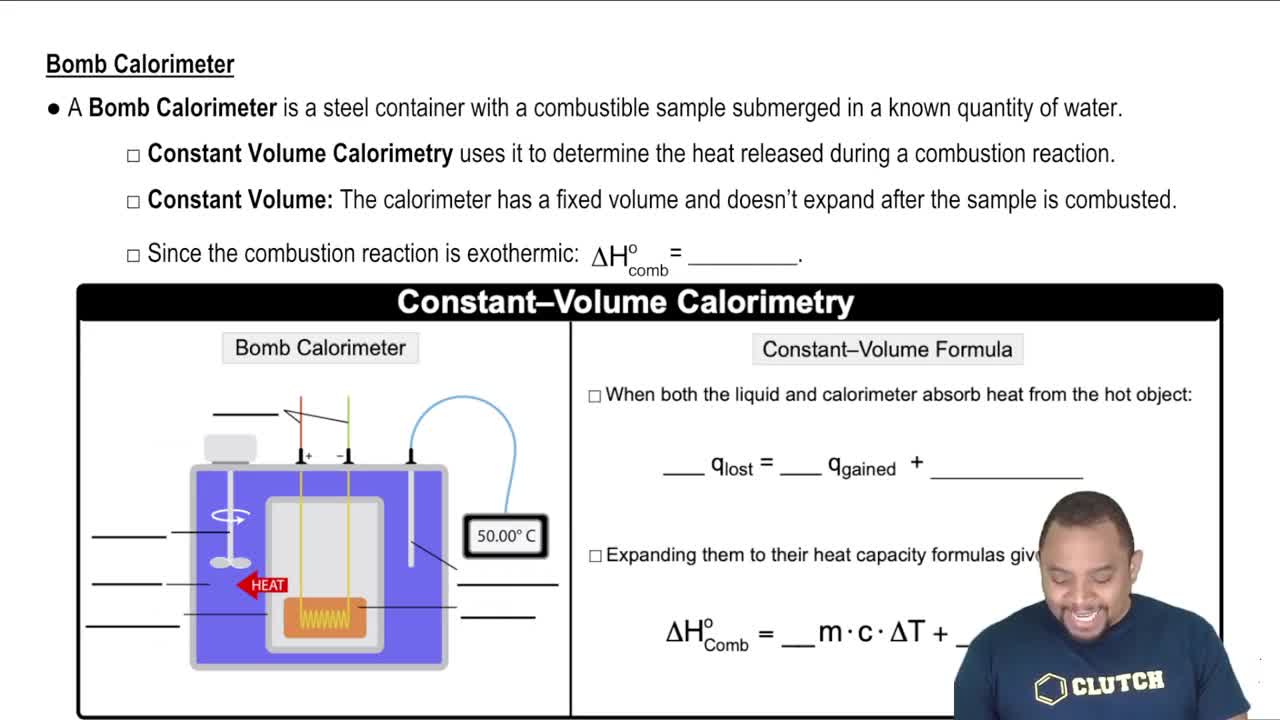(c) How many milliliters of a 6.00 M NaOH solution are needed to provide 0.350 mol of NaOH?
Ch.4 - Reactions in Aqueous Solution
Chapter 4, Problem 63
The average adult human male has a total blood volume of 5.0 L. If the concentration of sodium ion in this average individual is 0.135 M, what is the mass of sodium ion circulating in the blood?
 Verified step by step guidance
Verified step by step guidance1
Step 1: Identify the given values in the problem. The total blood volume is 5.0 L, and the concentration of sodium ion (Na^+) is 0.135 M (moles per liter).
Step 2: Use the formula for molarity, which is M = \frac{n}{V}, where M is the molarity, n is the number of moles, and V is the volume in liters. Rearrange this formula to solve for the number of moles: n = M \times V.
Step 3: Substitute the given values into the rearranged formula to calculate the number of moles of sodium ion: n = 0.135 \text{ M} \times 5.0 \text{ L}.
Step 4: Calculate the molar mass of sodium ion (Na^+). The atomic mass of sodium (Na) is approximately 22.99 g/mol.
Step 5: Use the number of moles calculated in Step 3 and the molar mass from Step 4 to find the mass of sodium ion: \text{mass} = n \times \text{molar mass of Na^+}.
Key Concepts
Here are the essential concepts you must grasp in order to answer the question correctly.
Molarity (M)
Molarity is a measure of concentration defined as the number of moles of solute per liter of solution. It is expressed in moles per liter (mol/L) and is crucial for calculating the amount of a substance in a given volume. In this question, the sodium ion concentration is given as 0.135 M, indicating that there are 0.135 moles of sodium ions in every liter of blood.
Recommended video:
Guided course

Molarity Concept
Total Volume
Total volume refers to the amount of space occupied by a substance, in this case, the total blood volume of an average adult male, which is 5.0 L. This volume is essential for determining the total amount of sodium ions present in the blood by multiplying the concentration (in moles per liter) by the total volume (in liters).
Recommended video:
Guided course

Constant-Volume Calorimetry
Molar Mass
Molar mass is the mass of one mole of a substance, typically expressed in grams per mole (g/mol). For sodium ions (Na+), the molar mass is approximately 23 g/mol. To find the mass of sodium ions in the blood, the number of moles (calculated from molarity and volume) is multiplied by the molar mass, providing the total mass of sodium circulating in the bloodstream.
Recommended video:
Guided course

Molar Mass Concept
Related Practice
Textbook Question
Textbook Question
(b) How many moles of KBr are present in 150 mL of a 0.112 M solution?
Textbook Question
(c) How many milliliters of 6.1 M HCl solution are needed to obtain 0.150 mol of HCl?
Textbook Question
A person suffering from hyponatremia has a sodium ion concentration in the blood of 0.118 M and a total blood volume of 4.6 L. What mass of sodium chloride would need to be added to the blood to bring the sodium ion concentration up to 0.138 M, assuming no change in blood volume?
Textbook Question
(a) How many grams of ethanol, CH3CH2OH, should you dissolve in water to make 1.00 L of vodka (which is an aqueous solution that is 6.86 M ethanol)? (b) Using the density of ethanol (0.789 g/mL), calculate the volume of ethanol you need to make 1.00 L of vodka.
